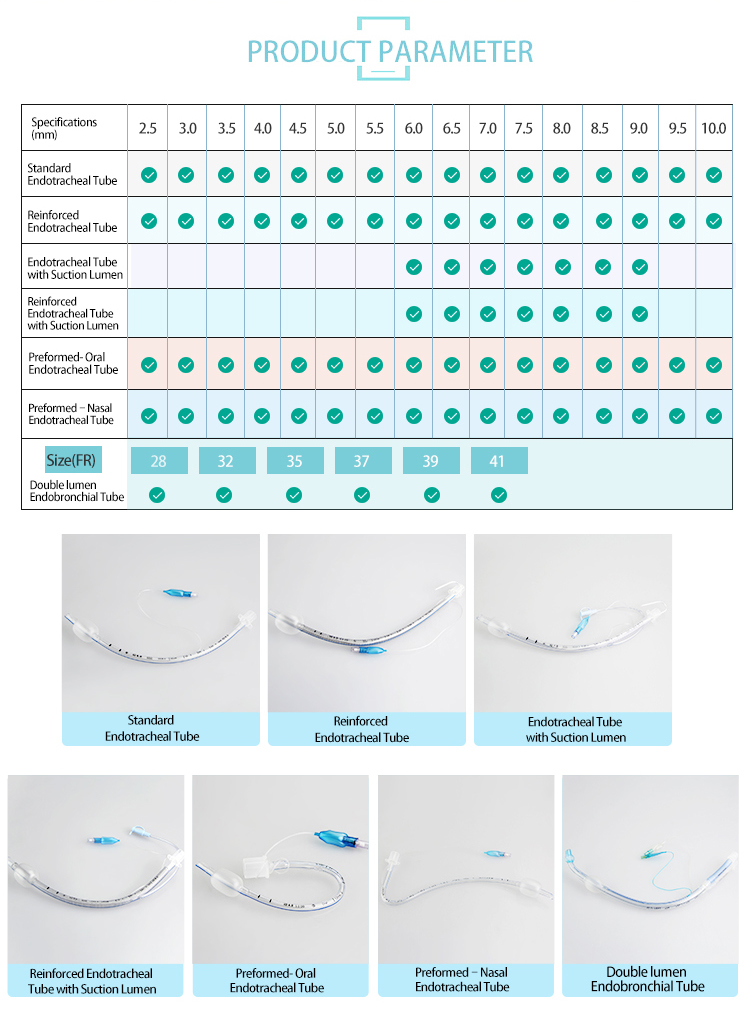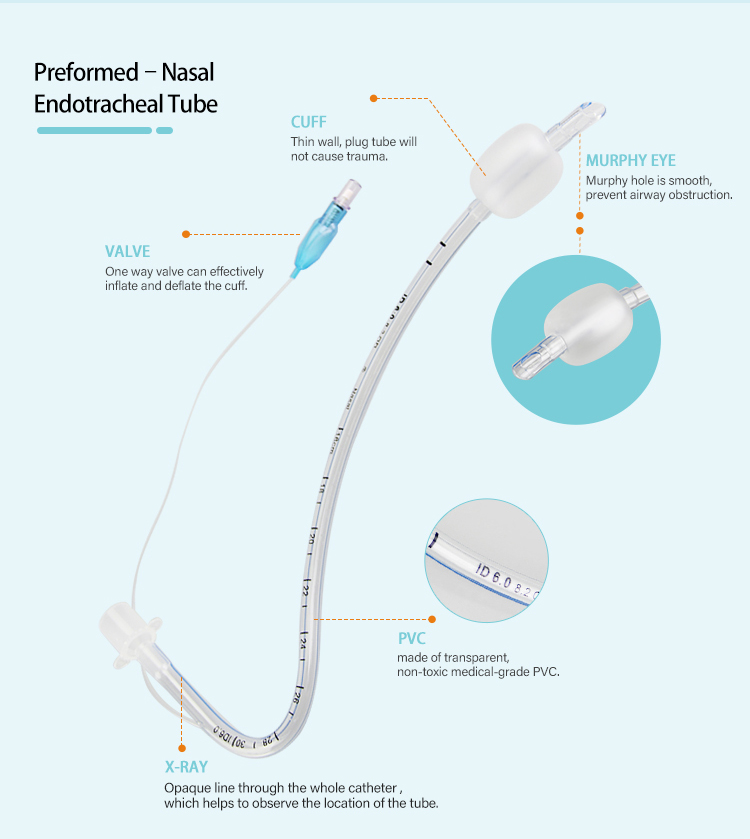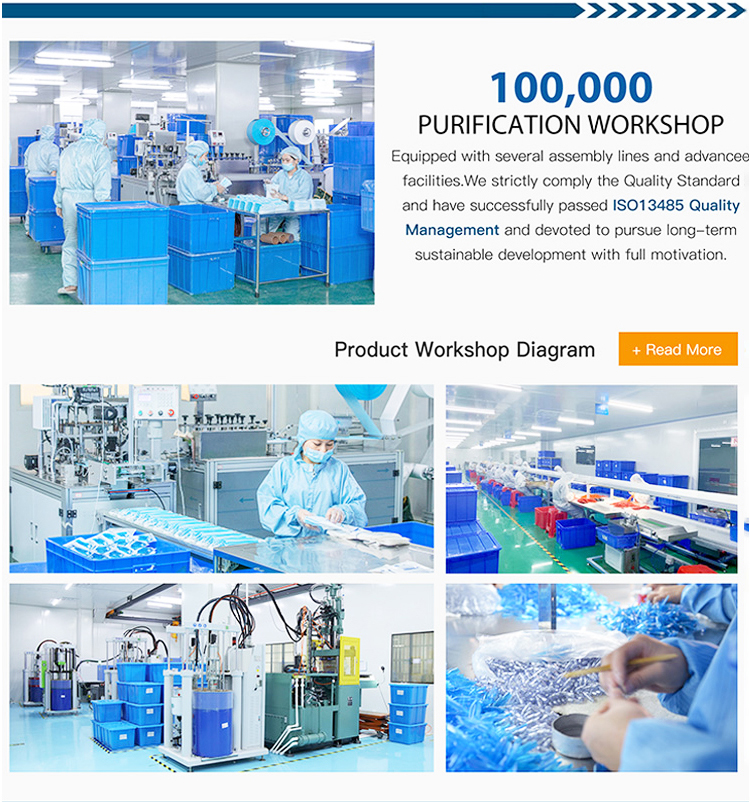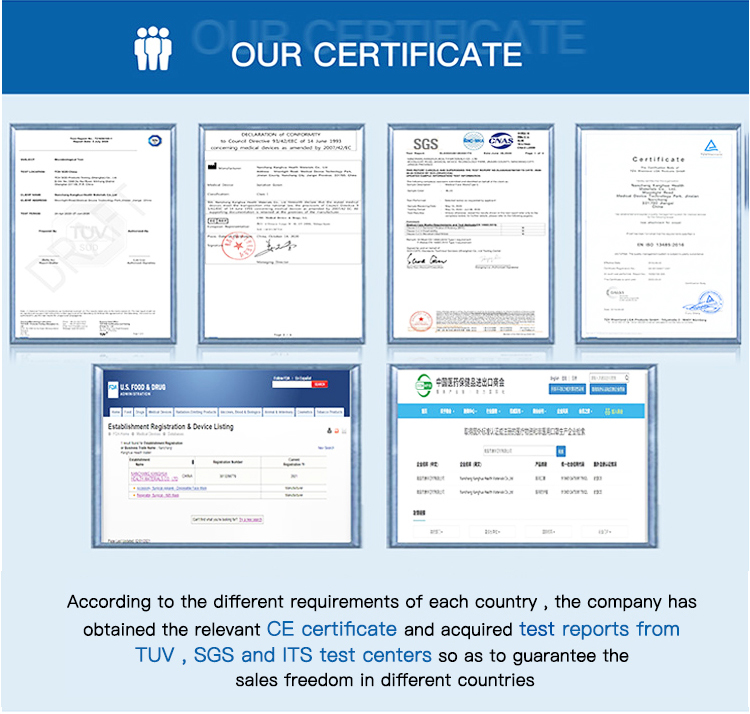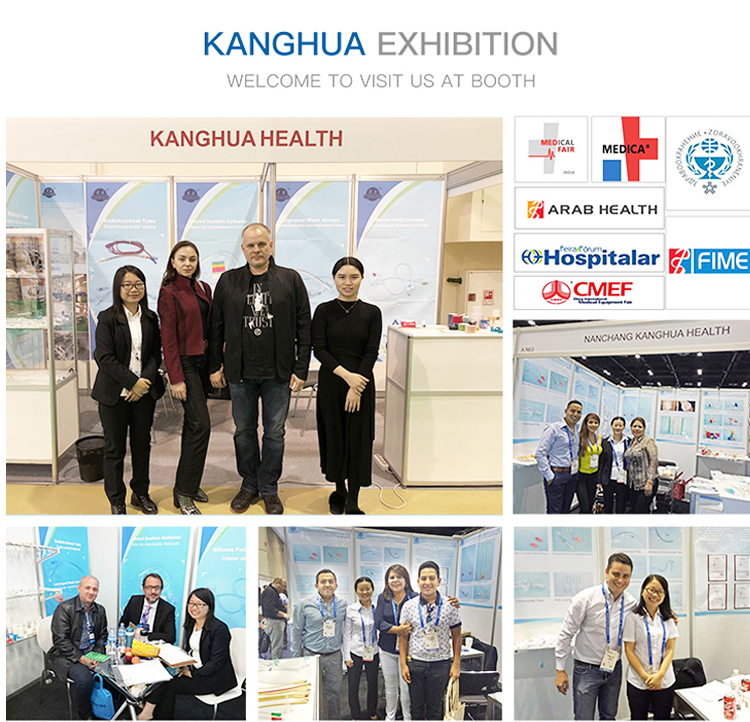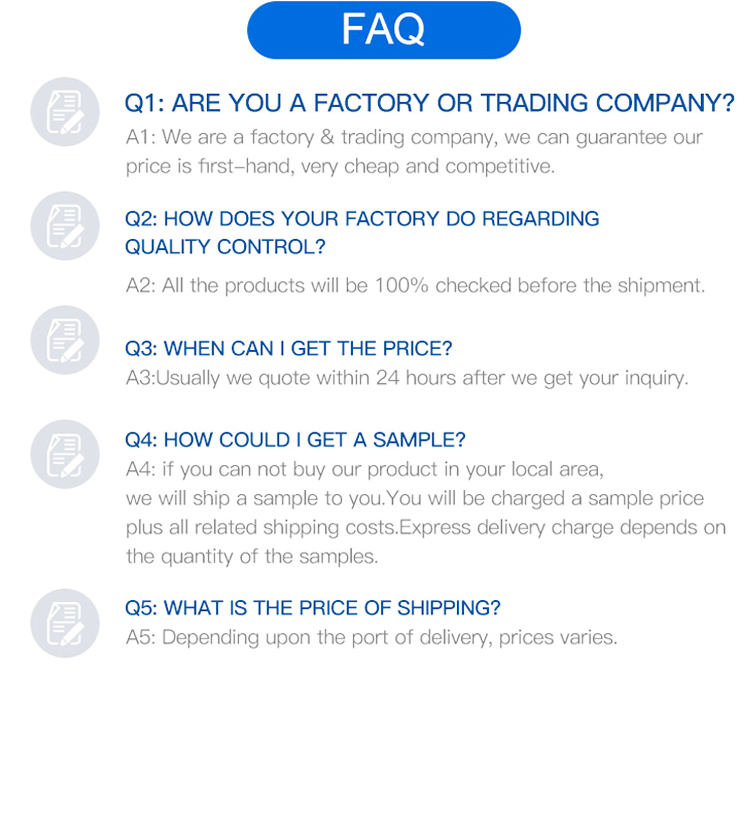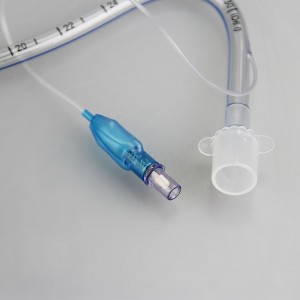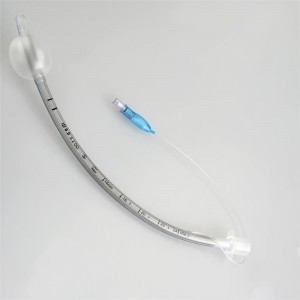Proformed Nasal Endotracheal Tube
Application
Endotracheal tube is a method of inserting a special endotracheal catheter into the trachea or bronchus through the mouth or nasal cavity and through the glottis. It provides the best conditions for airway patency, ventilation and oxygen supply, airway suction, etc. it is an important measure to rescue patients with respiratory dysfunction.
Specifications
1. with cuff or without cuff is possible
2. size from 2.0-10.0
3. standard, reinforced,nasal, Oral preformed
4. clear, soft and smooth
Feature
1.Tube made from Non-toxic PVC, latex free
2. PVC tube contains DEHP, DEHP FREE tube is available
3. Cuff: its great length reduces mucosal irritation by pressure distribution against a wider area of tracheal tissue and provides improved protection against micro aspiration of fluid along the cuff
4. Cuff:it vertically provides elasticity against the tube shaft in order to buffer short-term intratracheal pressure(e.g. coughing), keeping the tube in correct position
5. transparent tube allows indentification for condensation
6. radio opaque line through the tube length for X-ray visualisation
7. gently rounded, drawn in tracheal tube tip for atraumatic and smooth intubation
8. softly rounded Murphy eyes in tube tip is less invasive
9. in blister packing, single use, EO sterilization
10. certified with ,CE, ISO
11. specifications as below
Applicable Disease
1. Sudden cessation of spontaneous breathing.
2. Those who cannot meet the ventilation and oxygen supply needs of the body and need mechanical ventilation.
3. Those who cannot remove upper respiratory tract secretions, reflux of gastric contents or bleeding by mistake at any time.
4. Patients with upper respiratory tract injury, stenosis and obstruction affecting normal ventilation.
5. Central or peripheral respiratory failure.
Postoperative Care
1. Keep the endotracheal tube unobstructed and suck out secretions in time.
2. Keep the oral cavity clean. Patients with endotracheal intubation for more than 12 hours should receive oral care twice a day.
3. Strengthen the warm and wet management of airway.
4. Endotracheal tube is generally retained for no more than 3 ~ 5 days. If further treatment is needed, it can be changed to tracheotomy.
Description

